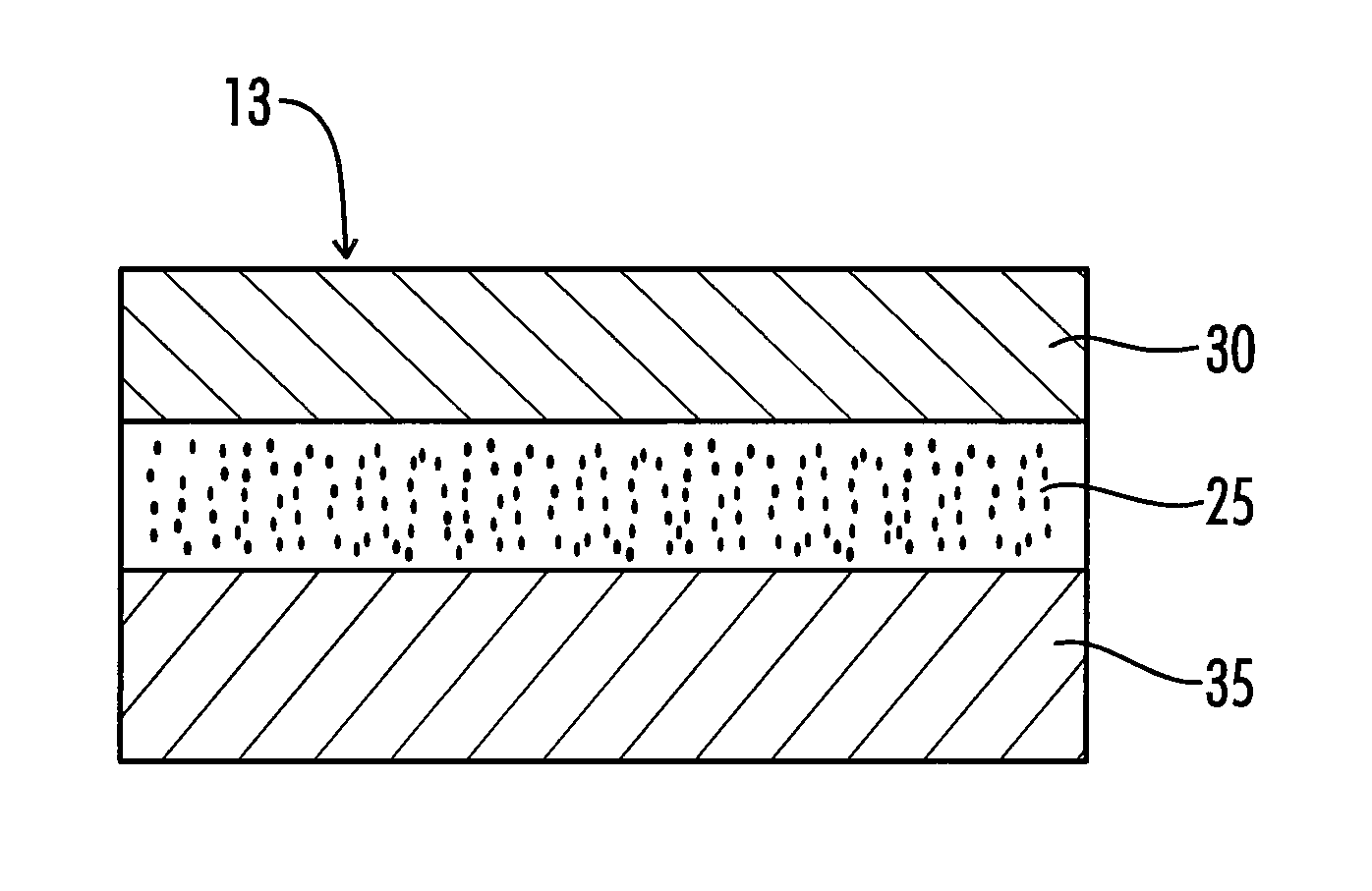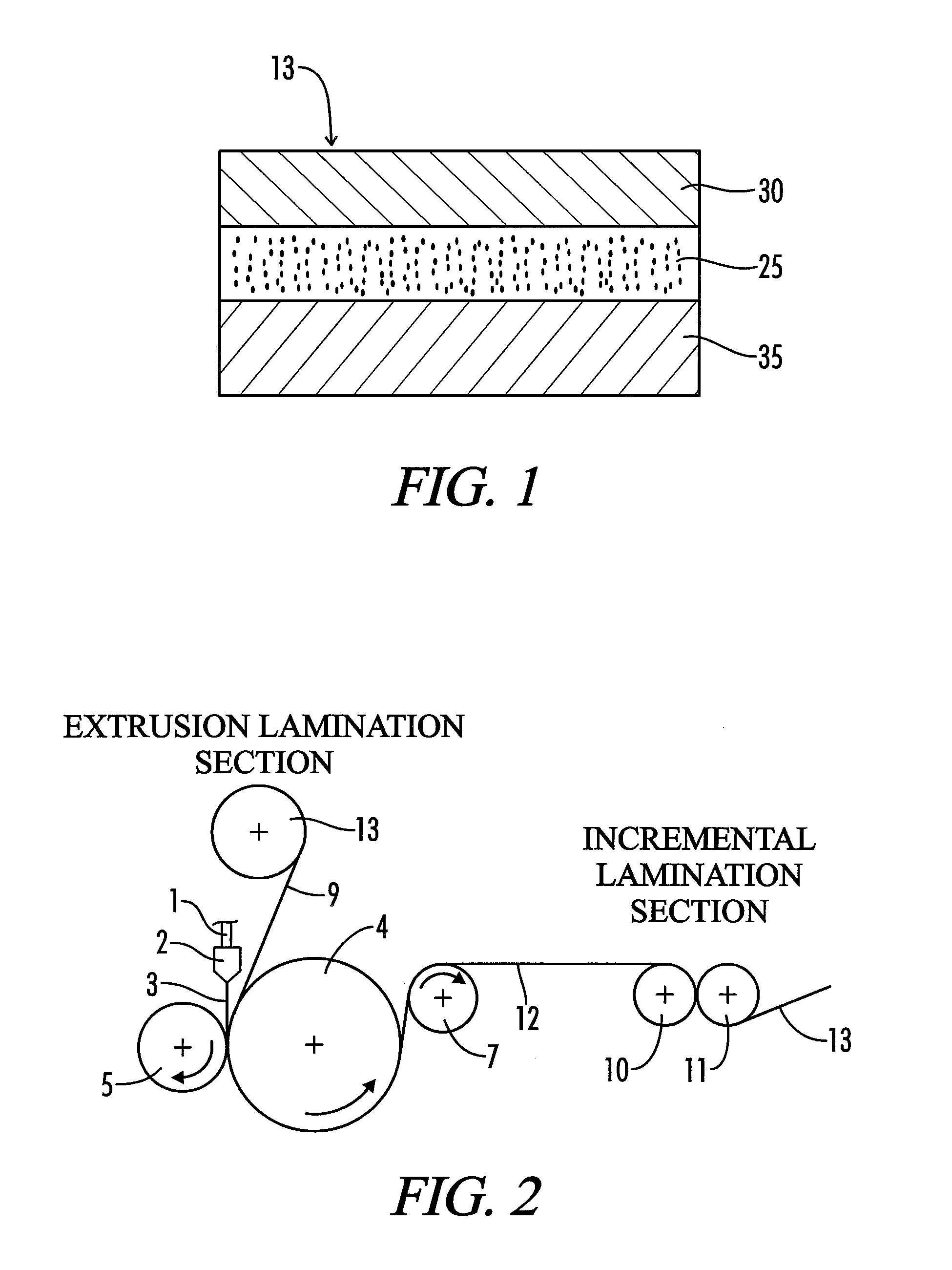Vapor permeable, liquid impermeable composite fabric and fabrication process
a technology of composite fabric and impermeable liquid, applied in cellulosic plastic layered products, instruments, weaving, etc., can solve the problems of affecting the stability of the class of non-perforated products based on separable microporous polyolefin films, affecting the stability of the class of non-perforated products, and failing to disclose or otherwise adequately address prior art, etc., to achieve sufficient stabilization, reduce the effect of moisture vapor transmission characteristics, and maintain water penetration
- Summary
- Abstract
- Description
- Claims
- Application Information
AI Technical Summary
Benefits of technology
Problems solved by technology
Method used
Image
Examples
Embodiment Construction
[0036]Numerous embodiments have been fabricated and evaluated to demonstrate the potential breadth and significance of the present invention. Further, the present invention encompassed several lamination techniques for combining the non-separable microporous precursor with various strength enhancing substrates to satisfy the physical requirements of a range of end-use applications. Additionally, several embodiments were further modified by vacuum metallization as a method of increasing the radiant barrier protection without sacrificing the breathability and moisture vapor transmission offered by the material, which makes this embodiment especially attractive as a building product.
[0037]As stated above, a preferred embodiment of the present invention is directed to a microporous barrier composite, comprising a flexible, vapor permeable, essentially liquid impermeable polyolefin barrier layer that comprises an ultra-violet light (UV) stabilizer and a thermal stabilizer; and a fabric l...
PUM
| Property | Measurement | Unit |
|---|---|---|
| Percent by mass | aaaaa | aaaaa |
| Percent by mass | aaaaa | aaaaa |
| Percent by mass | aaaaa | aaaaa |
Abstract
Description
Claims
Application Information
 Login to View More
Login to View More - R&D
- Intellectual Property
- Life Sciences
- Materials
- Tech Scout
- Unparalleled Data Quality
- Higher Quality Content
- 60% Fewer Hallucinations
Browse by: Latest US Patents, China's latest patents, Technical Efficacy Thesaurus, Application Domain, Technology Topic, Popular Technical Reports.
© 2025 PatSnap. All rights reserved.Legal|Privacy policy|Modern Slavery Act Transparency Statement|Sitemap|About US| Contact US: help@patsnap.com


